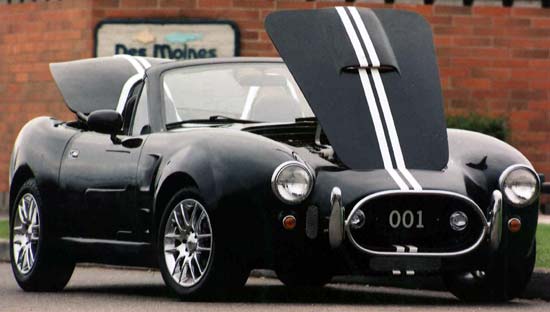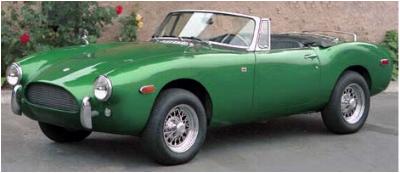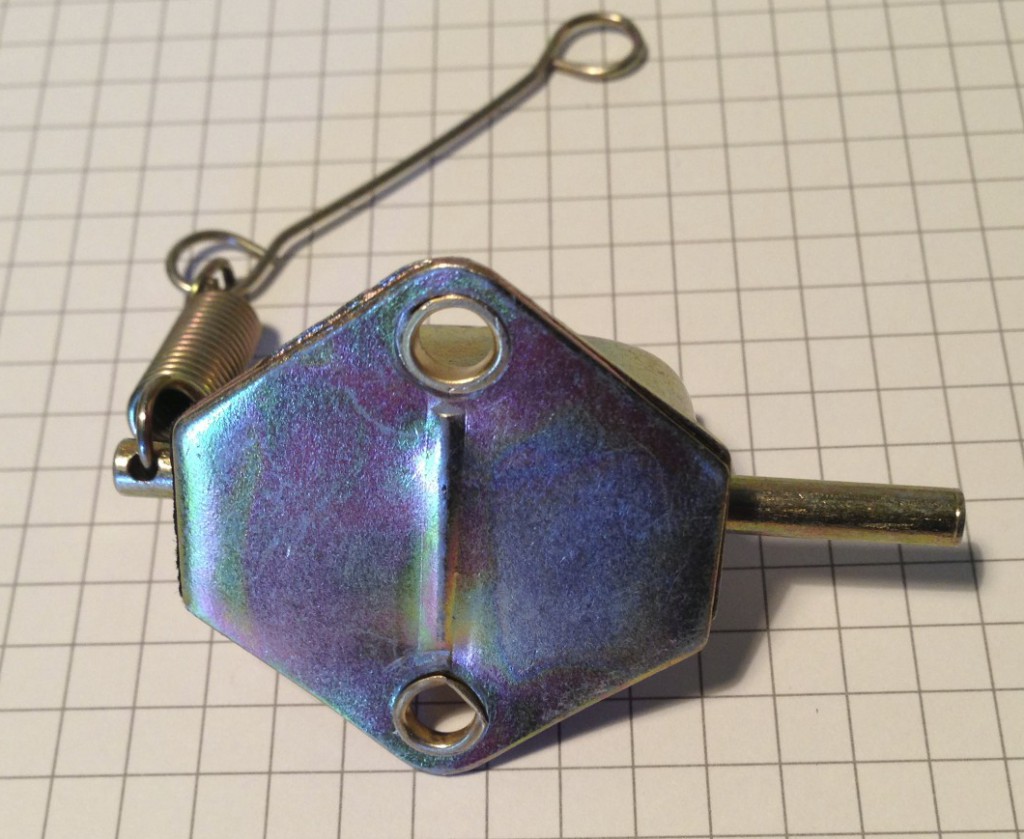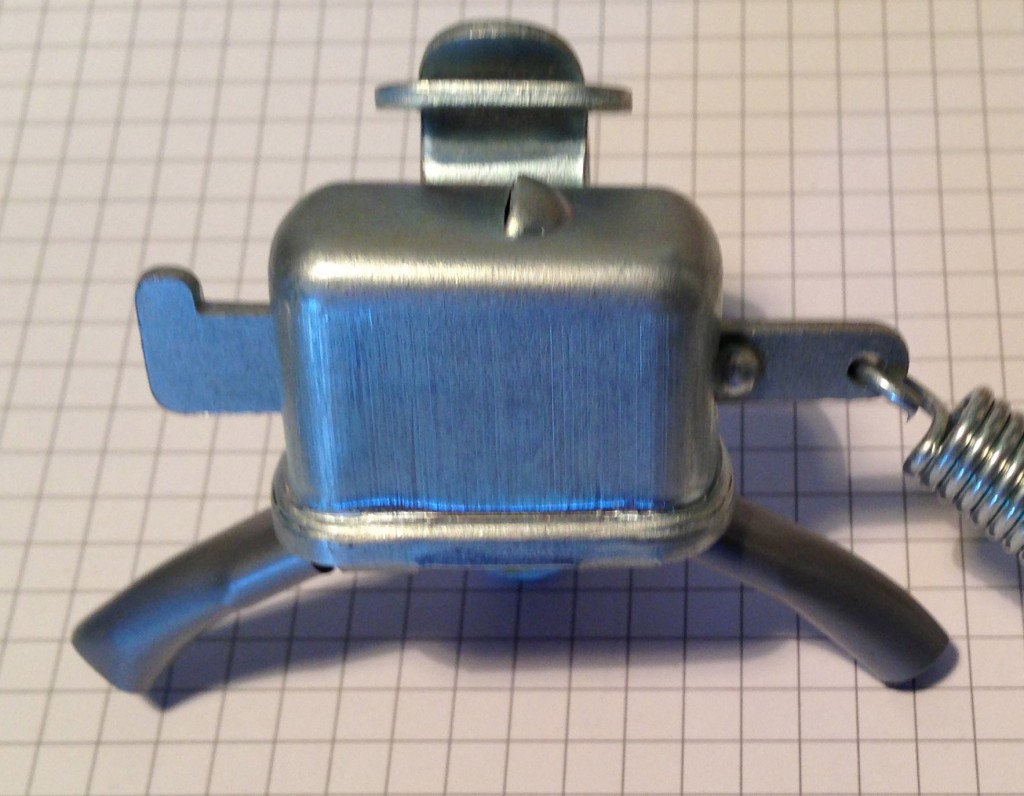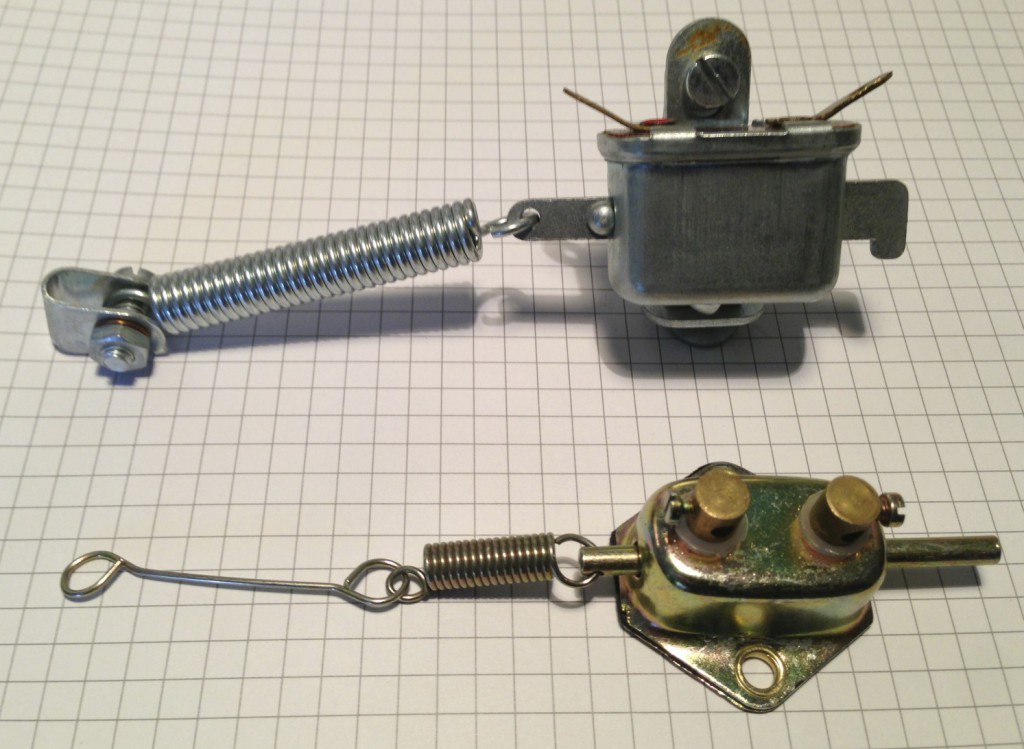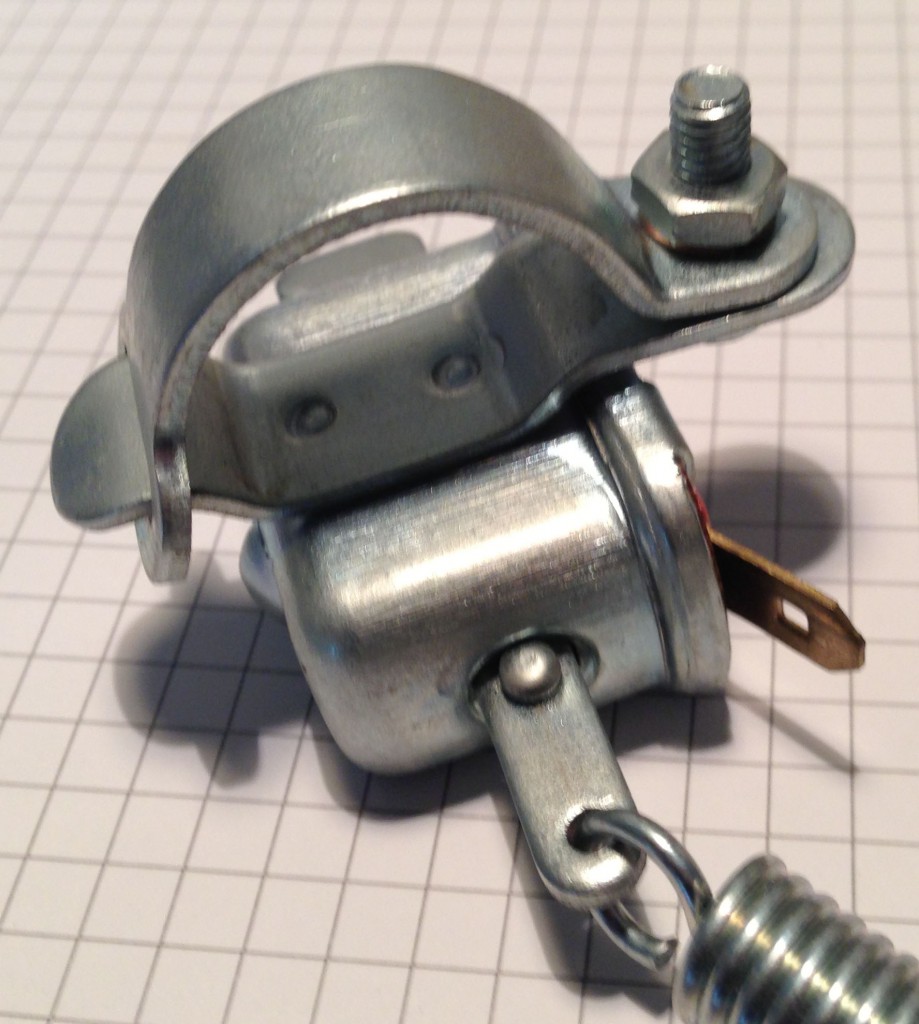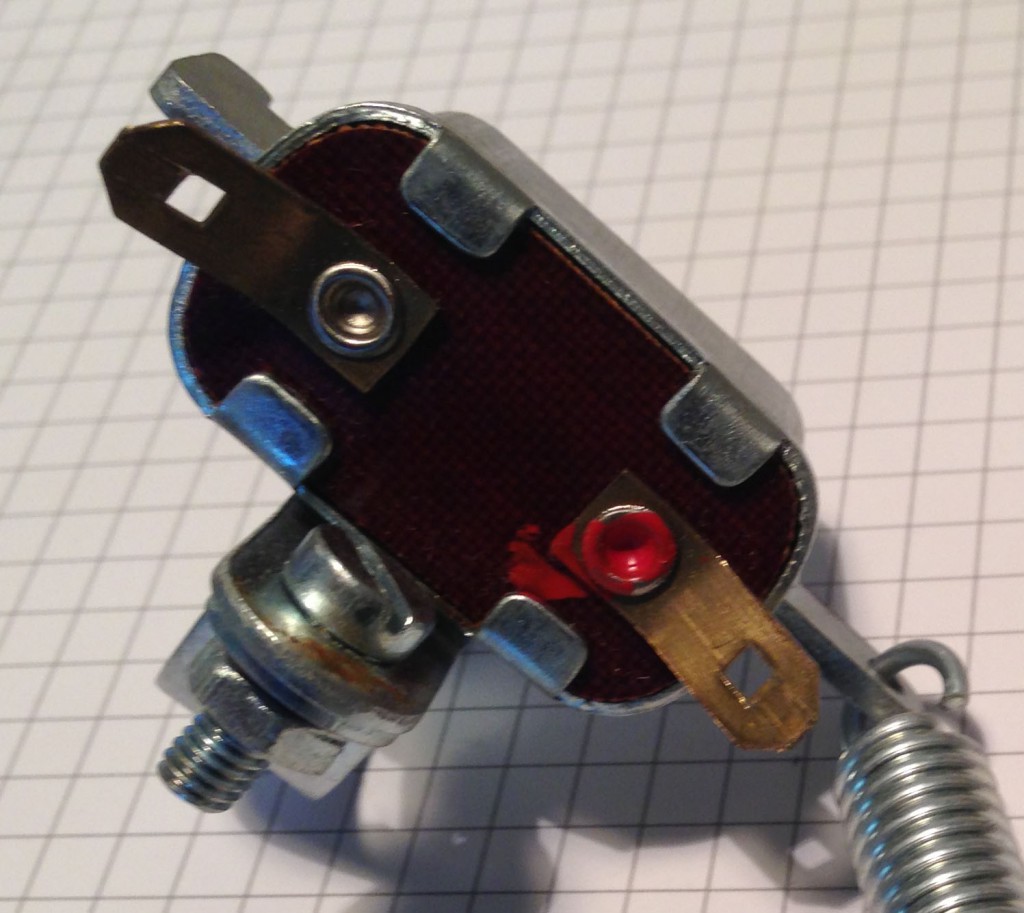What is a copy? What is a replica?
Aaaah! The language thing again! Copy, let me see: According to the ‘normal’, current usage of the word, a copy is something that, looks like, and if something functional, actually functions like, something else, that this ‘copy’ proposes to replace or replicate. Hmm. Another word! : Replica!
So, to take the issue a little further, there is actually virtually no limit to things that you can copy or replicate. Let’s take a motorcycle, for example. Motorcycle. Made up of lots of parts. To COPY one from scratch, would be very time-consuming, so no one actually makes a copy of one, just pinches a few ideas here and there: some styling, some function, some ergonomics or feel and the overall impression given by a particular bike.
Having gone that far, depending on what you start off with, you might be able to make something look and function identically to another bike which was based on what you have. A BSA Gold-Star, for example, when what you started out with was a B33 or B31. Some very handsome look-alikes out there, I can tell you! Another case would be the Velocette ‘Thruxton’, which has been much copied in its time (I have heard that there are twice as many purporting to be Thruxtons than were ever made by Veloce!)
Such bike will be copied down to the last nut and bolt, indiscernible to the uninitiated and initiated alike – except for the numbers on the frame and crankcases. So a copy might look and not necessarily have to perform the same as the ‘original’ item, whereas a replica is intended to be an ‘exact copy’ of the original in every way possible.
It is said that the best form of flattery is to be copied… So a copy is generally only considered a copy, if it could pass , at the very least by the casual observer, as the ‘real thing’…
So when is a copy just… well, NOT a copy? (or shouldn’t be called one or marketed as one?) where does dis-similarity remove the ‘right’ to call something a ‘copy’ or a ‘replica’?
When is a Cobra body kit just NOT a Cobra replica? (well, actually, never…)
No offense meant to the makers of this Mazda Miata (or MX5 in some countries) body-kit, but it never will fool anyone into thinking that it is a Shelby 427 Cobra. At least I don’t think so. It might approximate looking like one from certain angles, but it will never BE one (or, I suspect, sound or perform like one), despite the emotive words on the maker’s website:
“With the installation of the Monster Miata ‘427’ body conversion kit, you’ll transform your stock (or body-damaged) Miata into a unique version of a 427 roadster. For a small fraction of the effort and the cost, you can present the illusion that you spent years restoring an original of this rendition of “The bad news in Ferrari’s rearview mirror.”
This one here is MGB-based and looks more like a Triumph ‘spitfire’-copy than the Cobra it’s supposed to look like…
No prizes for guessing that this California-based company is no longer trading…
Great little car, I’m sure and a whole lotta fun, but NOT a Cobra, and should not really be marketed as even a copy of one, in my opinion.
I did have the pleasure and honour of living next to the owner of with one of the last 7 289 Mk III AC Cobras (not a Shelby) ever built in 1967, who was a very successful contender in Club racing with it (until the gout made him have to stop), and which I drove on occasion. One day I’ll post pictures, when I find them again…
Oh, there are plenty of facsimilies, copies, reproductions and replicas around, one of the most propagated is the Breitling Navitimer… ‘someone’ once maintained that 90% of the Breitlings available on the web are forgeries (copies etc.)! I suspect that it was Breitling themselves that did that, to get their own sales going again in the ‘90s!
Now, enough of that. So this blog is about, copies, replicas and reproductions, I believe. The only difference between the last three and a forgery, is that the forgery purports to be the actual original itself.
Case in point: There is a plethora of modern so-called reproductions of all sorts of items in the automotive world out there, that bear little more than a cursory resemblance to the original, that they ‘pretend’ to replicate. In this particular case, I’m going to take the ‘replica Miller 43E Stop Switch’ that is available ‘everywhere’ on eBay at present. It is only one of many ‘glaring examples’ of pure eye-wash, manufactured at minimum cost to replace in the memories of those that once would have known the difference, and to implant in the ‘knowledge bank’ of those who never saw an original, that this is a (if not the) replica.
This picture below is almost twice life-size…
The ‘Real Mcoy’, actually upside-down: For those of you that can’t really be bothered to look, there are a lot of differences, but I will start with the similarities.
They are both brake switches, which are mechanically operated by pulling on a metal part (normally held ‘out of contact’ by an internal spring) that closes the elctrical connection between two contacts, to allow the current to flow from the battery to the back-light , in order to illuminate the stop-light bulb. When the lever is released, it returns to the ‘off’-position (i.e. the connection is again ‘broken’)
There is a spring on the outside, connected to the push-me-pull-you thingy. This should be attached/clamped to the brake-rod, in the direction of ‘pull’, when someone steps on the brake lever (alternatively it could conceivably be attached to the lever-arm of the actual pedal. This would have to be the modus operandi when adapting it for use on a cable-operated brake, but that is not what it was designed for).
There are two electrical connections, which are isolated from ‘common earth’ (the frame!)
Both are shaped loosely as a dome, with a push/pull rod going through the length of it.
That is pretty much where the similarity ends. OK, a fair few similarities. However, that in itself, is not enough to justify the ‘replica’ tag – or not?
I cannot deny that both would perform the same function (for a while, anyway) Like the MGB and the Cobra, they both are capable of performing similar tasks, but that does not make one a replica of the other, or vice-versa.
Here they are next to one another: Here it is easier to spot the similarities and differences. Alone the sheer size and ‘robustness’ of the original materials and the proper fixing for the brake-rod, is plain to see in comparison to the weedy ‘replica’…which, being in the foreground, is also ‘perspectively’ at a size advantage…and leaves the fixing to the brake-rod entirely up to your imagination!
There is a considerable difference between the spring that is mounted on the brake-rod, and there is no fitting at all on the end of the replica. Noir does the replica offer any means to mount it onto the frame. That you will have to invent for yourself. Compare the original mounting, which would clamp onto the bottom frame member that the rear wheel is attached to:
Simple idea, sturdily constructed, unlike the thin and bendu flange on the back of the ‘replica’, which will probably need something like the handlebar-clip used for a replica horn-button (made, incidentally, and far more authentically, by the same ‘crew’ as well!)
While we are looking straight at it, here we also see the electrical connection. There were three types offered by Miller, ranging from the pre-war arrangement ssimilar to the riller rear light, with the sprung push-over cap with the hole through it…
to the actual arrangement shown on the replica, with the screw-fitting, soon after the war… to the push-on ‘Lucar’-type connections on this ‘fifties’ model of the 43E shown above.
Just check out the thickness of the mounting bracket, while you can get a good look! This is actually the TOP of the switch as it is intended to be mounted, and the Lucar strips and rivets would have simply replaced the more-expensive-to-produce screw-on fittings that were on there for the previous years. The most expensive to produce, would have been the ones on the black dome, and also used on the Miller 36E rear light, with the deep-pressed cover fitted over the turned connection, held under tension with a spring and retained by a bent-in tab on each side, in the hole where the cable passes through.
The actual Miller item is a great deal deeper than the ‘replica’, and the material is much thicker. The underside of the dome has a rear-facing ‘louver’ pressed into it, to allow drainage of any moisture that might otherwise accumulate in it, hence the connections have to be on top when mounted. The brakes on the British bikes this switch is meant for were at this time rod-operated and the foot-lever was mounted on the left-hand-side, and so most models of the time would have had drum brakes, also on the left, usually conveniently in combination somehow with the drive-sprocket for the rear wheel. The Switch also fits nicely with this, for when the mounting faces away from me, when standing on the left of the bike, the switch is mounted on the outside of the frame – for convenience of access. The electrical connections are then on the top-side (where they can be ‘got at’ and be readily inspected for damage – and be protected by the switch body itself from thrown-up road-debris) and the coiled spring leads out to the front of the bike, in the direction of pull, when the brake-pedal is depressed. The drainage louver is also conveniently on the underside, facing away from the direction of travel.
Altogether, rather well thought out and not just thrown together.
I probably don’t need to elaborate on the differences in the internal construction and the choice of materials for the actuating mechanism; suffice to say that the one is very flimsy and prone to condensation, due to the lack also of any proper ventilation and drainage, the dimensions of the switchgear are proportionate to the size of the push-me-pull-you arrangement and the depth of the body on both is very different.
Perhaps I’m just too fernickety, but there is no way, that I could bring myself to offer the one as a ‘replica’ of the other, just because it has a vague outward similarity and performs the same function (for however long) .
Brake switch is brake-switch, no doubt about it, but ‘Replica Miller 34E’ would, in my book at least, look a bit more like the original, have proper mountings for brake-arm and body of the switch and being made with modern materials, last a lot longer, and not fall apart after one year (if not less) of ‘normal use’.
There we have it again: WE are not expected to actually USE it, coz it’s for an old bike that is too VALUABLE to DARE to use! And so, being so valuable, we will pay loads of money to buy this apology of a brake-switch. It is, after all the only one even approximating the original, isn’t it, so we just have to put up with the dross the supplier has on stock, or go ‘hungry’.
Hmmph!
©peter gouws 2013

